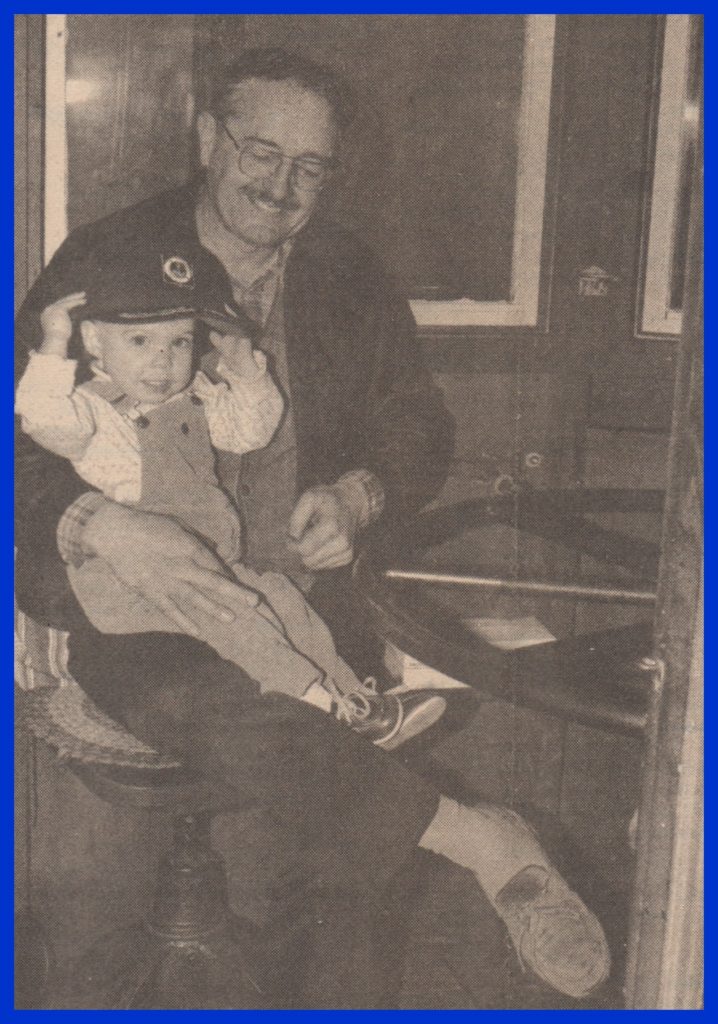A photograph taken in 1983 of Captain Jack Dillman of the Millersburg Ferry, Millersburg, Dauphin County, Pennsylvania, that appeared in the Upper Dauphin Sentinel, 13 April 1983, with the following caption:
Captain Jack Dillman holds Amanda Wallis, one of the 1983 ferry season’s first passengers, at the wheel of the Roaring Bull last week. Photo by Marlen Enders.
The article describing the beginning of the 1983 ferry season was by Upper Dauphin Sentinel Staff Writer Stacy Deitrich; it appeared in the same newspaper. Portions of that article which describe some of the history of the ferry follow here:
MILLERSBURG — The Millersburg Ferry, an institution in this community and the surrounding areas, has begun yet another season of service on the Susquehanna River.
The two wooden stern wheel ferries, the last ones in operation on the Susquehanna river, and the only such boats remaining in operation in the United States, began their 1983 season the last week in March. The Falcon and the Roaring Bull will continue their daily treks across the river until the first week in December.
The Millersburg Ferry service has been in operation in one form or another for more than 166 years, dating back to 1817 and beyond. On January 1, 1971, it became a registered historic landmark.
According to a pamphlet on the Millersburg Ferry, in the old days, the transporting of passengers and freight was done by hand, utilizing rowboats when the river was high in the spring, and then transferring the operation to poleboats, such as canoes and flats, once the water reached its normally shallow level. Steam-powered boats, such as the Enterprise were introduced in 1873 because of increased business. To insure adequate water for the paddlewheelers, a dam covered by loose stones was erected across the river. Steam driven sidewheelers were replaced by gasoline powered boats having the paddlewheel located at the stern after World War I. They have been of the stern wheel configuration ever since. At one time the ferry business was so good that in addition to the existing two boats, the use of two other ferries, the Monarch and the Bluegoose was required.
According to the pamphlet, the Millersburg Ferry covers a mile of water that seldom exceeds three feet in depth and connects the town of Millersburg with an adjacent landing in Perry County, about two miles below the town of Liverpool. The daily run begins at 7:30 a.m., but trips can be made earlier if special arrangements are made. The service continues until dusk.
Each ferry can carry a maximum of four cars, but each will make the trip across the river if only one car is aboard. The boats each have a capacity of 60 passengers. The trip across the river averages 20 minutes. Passenger comfort is provided by cross ventilation in the summer and wood stoves during cold weather….
According to ferry Captain Jack Dillman, the ferries have been chartered in the past for a variety of activities, including school trips, church meetings, reunions, and even weddings….
___________________________________________
Corrections and additional information should be added as comments to this post.
